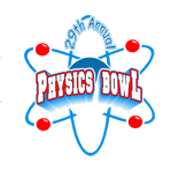- 翰林提供学术活动、国际课程、科研项目一站式留学背景提升服务!
- 400 888 0080
翰林国际教育IGCSE Physics物理辅导
翰林国际教育IGCSE Physics物理辅导计划
| Topic | Subtopics | Hours* | Homework |
| Topic 1. General physics | 1.1 Length and time | ||
| 1.2 Motion | |||
| 1.3 Mass and weight | |||
| 1.4 Density | |||
| 1.5 Forces | |||
| 1.5.1 Effects of forces | |||
| 1.5.2 Turning effect | |||
| 1.5.3 Conditions for equilibrium | |||
| 1.5.4 Centre of mass | |||
| 1.5.5 Scalars and vectors | |||
| 1.6 Momentum (Extended candidates only) | |||
| 1.7 Energy, work and power | |||
| 1.7.1 Energy | |||
| 1.7.2 Energy resources | |||
| 1.7.3 Work | |||
| 1.7.4 Power | |||
| 1.8 Pressure | |||
| Topic 2. Thermal physics | 2.1 Simple kinetic molecular model of matter | ||
| 2.1.1 States of matter | |||
| 2.1.2 Molecular model | |||
| 2.1.3 Evaporation | |||
| 2.1.4 Pressure changes | |||
| 2.2 Thermal properties and temperature | |||
| 2.2.1 Thermal expansion of solids, liquids and gases | |||
| 2.2.2 Measurement of temperature | |||
| 2.2.3 Thermal capacity (heat capacity) | |||
| 2.2.4 Melting and boiling | |||
| 2.3 Thermal processes | |||
| 2.3.1 Conduction | |||
| 2.3.2 Convection | |||
| 2.3.3 Radiation | |||
| 2.3.4 Consequences of energy transfer | |||
| Topic 3.Properties of waves, Including light and sound | 3.1 General wave properties | ||
| 3.2 Light | |||
| 3.2.1 Reflection of light | |||
| 3.2.2 Refraction of light | |||
| 3.2.3 Thin converging lens | |||
| 3.2.4 Dispersion of light | |||
| 3.3 Electromagnetic spectrum | |||
| 3.4 Sound | |||
| Topic 4. Electricity and Magnetism | 4.1 Simple phenomena of magnetism | ||
| 4.2 Electrical quantities | |||
| 4.2.1 Electric charge | |||
| 4.2.2 Current | |||
| 4.2.3 Electromotive force | |||
| 4.2.4 Potential difference | |||
| 4.2.5 Resistance | |||
| 4.2.6 Electrical working | |||
| 4.3 Electric circuits | |||
| 4.3.1 Circuit diagrams | |||
| 4.3.2 Series and parallel circuits | |||
| 4.3.3 Action and use of circuit components | |||
| 4.4 Digital electronics (Extended candidates only) | |||
| 4.5 Dangers of electricity | |||
| 4.6 Electromagnetic effects | |||
| 4.6.1 Electromagnetic induction | |||
| 4.6.2 a.c. generator | |||
| 4.6.3 Transformer | |||
| 4.6.4 The magnetic effect of a current | |||
| 4.6.5 Force on a current-carrying conductor | |||
| 4.6.6 d.c. motor | |||
| Topic 5. Atomic physics | 5.1 The nuclear atom | ||
| 5.1.1 Atomic model | |||
| 5.1.2 Nucleus | |||
| 5.2 Radioactivity | |||
| 5.2.1 Detection of radioactivity | |||
| 5.2.2 Characteristics of the three kinds of emission | |||
| 5.2.3 Radioactive decay | |||
| 5.2.4 Half-life | |||
| 5.2.5 Safety precautions | |||
| Total |
*计划课时仅供学霸级学员参考,实际用时依学员具体情况会有调整。
*翰林国际教育原创内容,谢绝转载。商务合作请联系小助手linstitute2。
IGCSE Physics物理相关国际学术活动
国际课程+国际学术活动更具竞争力
Physics Bowl 每年3-4月
难 度: 含金量: 美国物理杯学术活动,30年历史,美国最具影响力的物理学术活动,每年有超过10000名美国学生参加
IYPT 每年6-7月
难 度: 含金量: International Youth Physicist's Tournament 国际青年物理学家学术活动,团队赛,根据给定的开放性物理问题的进行研究,根据得出的结果和其他队进行辩论。
PUPC 每年11月19日线下比赛
难 度: 含金量: Princeton University Physics Competition, 普林斯顿大学物理学术活动,分为赛前的线上科研题和线下比赛当天的学术活动技巧题
丘成桐物理奖 每年9月交作品,12月答辩
难 度: 含金量: Yau Science Awards (Physics),每年一届,研究报告的形式参赛。旨在发现有前途的全球华人年轻科学天才。
British Physics Olympiad 每年11月
难 度: 含金量: BphO英国物理奥赛为英国最高水平的高中物理学术活动,为英国选拔IPhO国际物理奥赛参赛队员,除竞争奖牌和增加理工科专业申请优势外,获奖选手有机会获邀参加英国物理学术活动集训营(中国)。
CAP Prize Exam 每年3月
难 度: 含金量: 加拿大物理大奖赛为加拿大最高水平的高中物理学术活动,是加拿大选拔IPhO国际物理奥赛参赛队的第一轮。因其认可度极高,如若获奖,中国学生可以借此为自己未来大学申请镀金。

早鸟钜惠!翰林2025暑期班课上线

最新发布
© 2025. All Rights Reserved. 沪ICP备2023009024号-1













